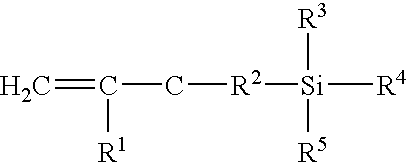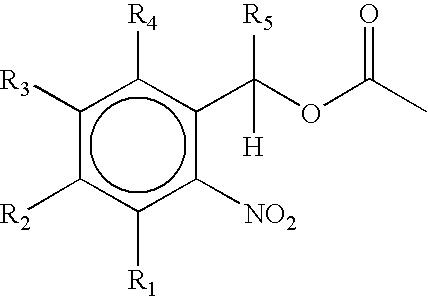Detection of nucleic acid sequence differences using the ligase detection reaction with addressable arrays
a nucleic acid sequence and addressable array technology, applied in the field of nucleic acid sequence differences detection, to achieve the effect of reducing the quantity of solid supports, reducing the cost of analyzing each sample, and being convenient to us
- Summary
- Abstract
- Description
- Claims
- Application Information
AI Technical Summary
Benefits of technology
Problems solved by technology
Method used
Image
Examples
example 1
Immobilization of capture oligonucleotides to solid supports
[0228]The solid support for immobilization was glass, in particular microscope slides The immobilization to glass (e.g., microscope slides), or other supports such as silicon (e.g., chips), membranes (e.g., nylon membranes), beads (e.g., paramagnetic or agarose beads), or plastics supports (e.g., polyethylene sheets) of capture oligonucleotides in spatially addressable arrays is comprised of 5 steps:
[0229]A. Silanization of Support
[0230]The silanization reagent was 3-aminopropyl triethoxysilane (“APTS”). Alternatively, 3-glycidoxypropyltrimethoxysilane. (K. L. Beattie, et al., “Advances in Genosensor Research,”Clin. Chem., 41:700–706 (1995); U. Maskos, et al., “Oligonucleotide Hybridizations on Glass Supports: a Novel Linker for Oligonucleotide Synthesis and Hybridization Properties of Oligonucleotides Synthesized in situ, “Nucleic Acids Res., 20:1679–1684 (1992); C. F. Mandenius, et al., “Coupling of Biomolecules to Silico...
example 2
[0240]A semi-automated custom-designed assay system was made for testing hybridizations and subsequent washings of captured oligonucleotide probe-capture oligonucleotide hybrids in a high-throughput format using the GeneAmp In Situ PCR System 1000™ (Perkin Elmer, Applied Biosystems Division, Foster City, Calif.) (G. J. Nuovo, PCR in situ Hybridization, New York: Raven Press (2nd ed. 1994), which is hereby incorporated by reference). A general flowchart of the system is shown in FIG. 27. The system consists of a flow-through hybridization chamber which is connected via a sample loading device and a multiple port system to a battery of liquid reservoirs, and to a waste reservoir. The fluid delivery is controlled by a pump. The pump was placed at the end of the assembly line and operated under conditions to maintain a light vacuum to prevent leakage and contamination of the system. Since the hybridization chamber and the liquid reservoirs were designed to fit ...
example 3
Hybridization and Washing Conditions
[0252]In order to assess the capture specificity of different capture oligonucleotides, hybridization experiments were carried out using two capture oligonucelotide probes that had 3 out of 6 tetramers (i.e., 12 out of 24 nucleotides) in common. This example represents the most difficult case to distinguish between different capture oligonucleotides. In general, other capture oligonucleotides would be selected that would have fewer tetramers in common to separate different amplification products on an addressable array.
[0253]Typically, 10 pmol of each of the oligonucleotides comp 12 and comp 14 (see Table 3) were 5′ end labeled in a volume of 20 μl containing 10 units of T4 polynucleotide kinase (New England Biolabs, Beverly, Mass.), 2.22 MBq (60 μCi) [γ-32P] ATP, 50 mM Tris-HCl, pH 8, 10 mM MgCl2, 1 mM EDTA, and 10 mM dithiothreitol, according to a slightly modified standard procedure described in the literature. Unincorporated radioactive nucleo...
PUM
| Property | Measurement | Unit |
|---|---|---|
| temperature | aaaaa | aaaaa |
| temperature | aaaaa | aaaaa |
| Tm | aaaaa | aaaaa |
Abstract
Description
Claims
Application Information
 Login to View More
Login to View More - R&D
- Intellectual Property
- Life Sciences
- Materials
- Tech Scout
- Unparalleled Data Quality
- Higher Quality Content
- 60% Fewer Hallucinations
Browse by: Latest US Patents, China's latest patents, Technical Efficacy Thesaurus, Application Domain, Technology Topic, Popular Technical Reports.
© 2025 PatSnap. All rights reserved.Legal|Privacy policy|Modern Slavery Act Transparency Statement|Sitemap|About US| Contact US: help@patsnap.com



